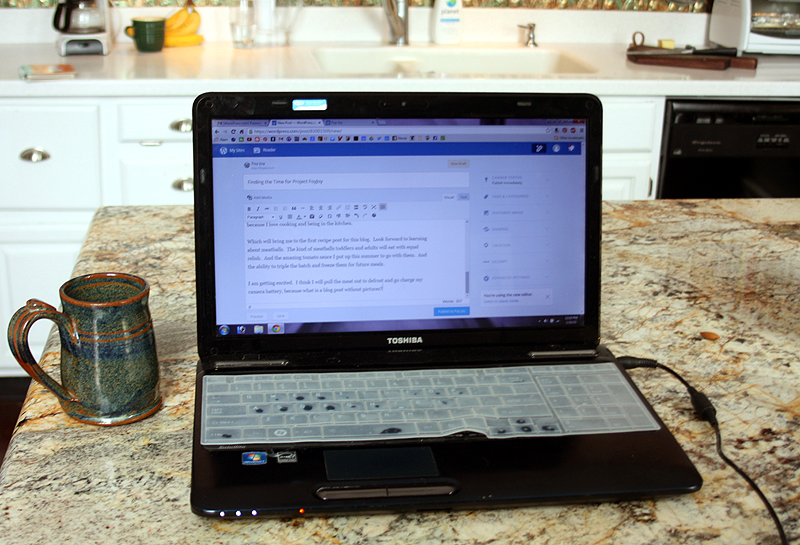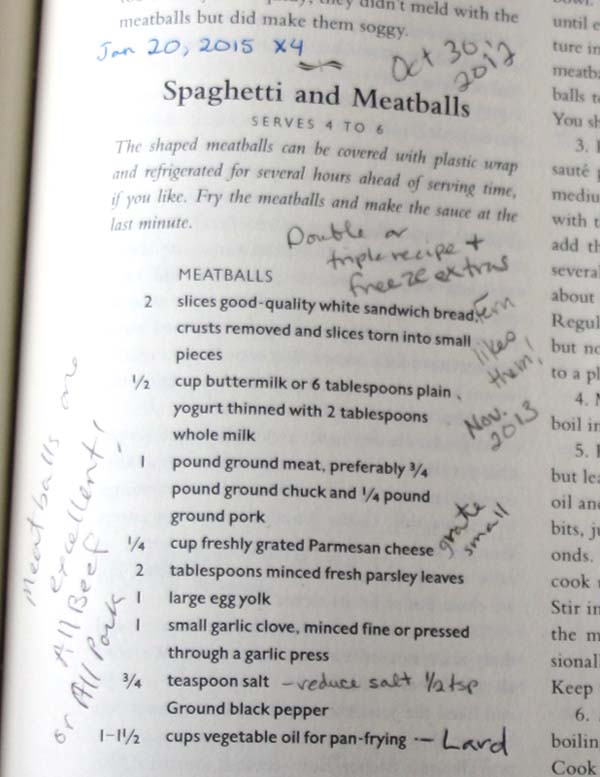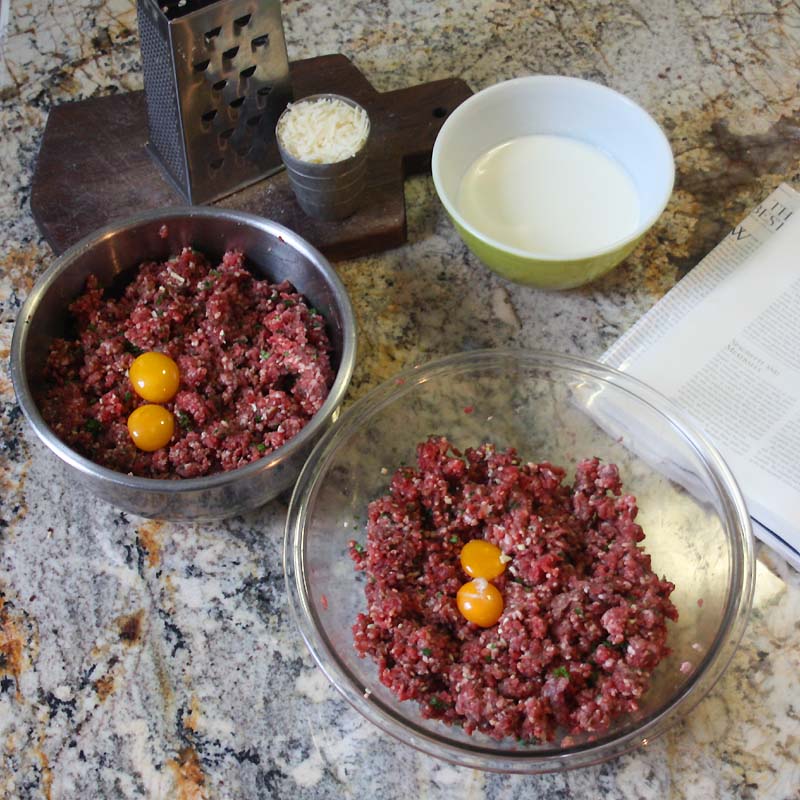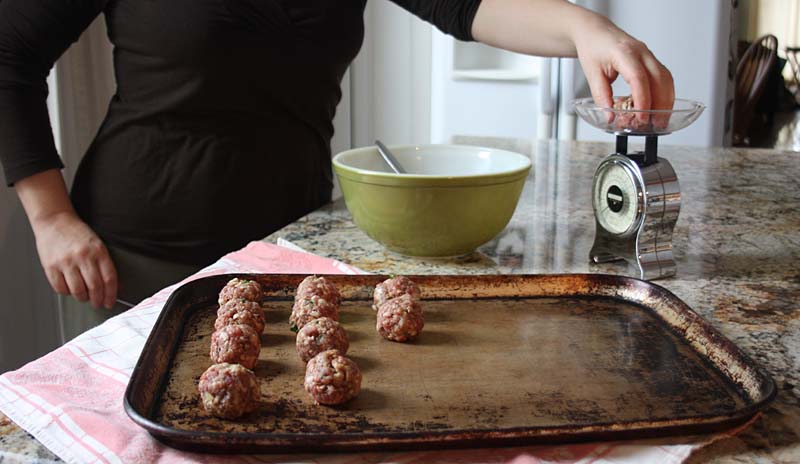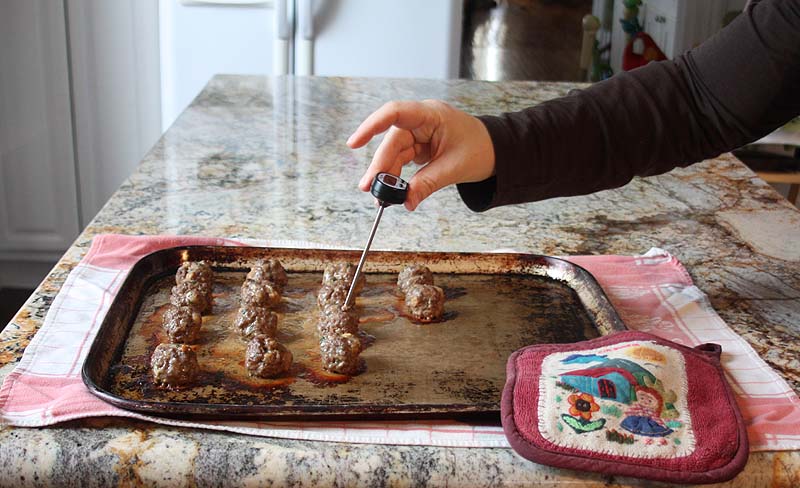I promised you meatballs. The kind of meatballs that kids and adults love equally. The kind that freeze well. The kind that can be made as a quintuple batch. Why would you want meatballs that were all of these things? Because some days you want a tasty, quick toddler lunch or a fast family meal; because some days there are not enough hours in the day.
I am working on developing recipes that create multiple meals worth of food. I have never understood folks who don't like leftovers. Maybe they just don't have recipes that reheat well? Then this recipe would be revolutionary - meatballs reheat well - for the record.
I love to cook and I would gladly make a homemade meal every night, but as I work on getting this blog up and running, and look into an expanding the vegetable garden, and possibly working in other people's gardens I realize having an arsenal of big batch recipes will be important to my peace of mind and the health of my family
Several nights this week I made big batch recipes and then didn't have to cook dinner the next day. It was strange, but it was nice to do fewer dishes. I'm not sure what I did with my extra time. I do know I did not work on this website's design, sorry.
I tried a couple recipes that while they did make a quantity of food were nothing special and won't bare repeating. I did make these meatballs. This is one of my few recipes that I knew would scale and freeze well. You should try it. You will wash fewer dishes. You will be thankful.
The recipe comes from my trusty Cook's Illustrated New Best Recipe (c)2004.
When I was going through my Grandma's recipes I loved her hand written notes, they gave a context to the recipes. Since then I have started:
- dating when I try a recipe,
- any changes/additions and
- if there were any special occasions or people who enjoyed the dish.
I highly encourage you to do the same. I enjoy seeing my notes and find them useful; And maybe future generations will too.
The first time I made this meatball recipe was three years ago, as you can see by my notes, after Jeff told me he preferred meatballs to meat sauce. I think most people do, but meat sauce is just so frackin' easy. Then I found a way to make meatballs just as easy, batch 'em!
There was a time when I could not get JuneBug to eat meat when she was about 12-18 months old. She would only eat ground meat. I think it had something to do with meat being hard for her small jaw to chew. I found having meatballs in the freezer to be fantastic as quick toddler meals.
Now up until yesterday I had never done five pounds of meatballs in one go before, but I had tripled this recipe with great success before so I figured it would work.
This is what a quintuple batch of meat mixture looks like:
This is everything but the buttermilk and bread mixture. I generally make all our bread. That's another recipe that I should write up! It worked out fabulously since I we had fresh bread to make meatball sandwiches for dinner!
By the way, the mash of buttermilk and bread is called a panade and keeps the meatballs moist and tender. This is especially important when you are using lean beef, like from a grass-fed cow. How's that for a cooking tip?
It is important to form meatballs that are all the same size so they cook evenly. Is the scale over kill? Maybe, but I am not good at eyeballing and this works for me. I make small one-ounce sized meatballs.
Also, I have a remote camera shutter and now I can be in the photo too. Nifty.
After the meatballs baked, I used a thermometer to check and make sure they are cooked to a safe temperature. Ground meat should be cooked to 165 degrees F.
I do acknowledge that it is tastier to pan fry the meatballs. However, pan frying 85 meatballs is not a time saving endeavor and I found it hard to get an even temperature on all the balls. And since some of these are getting frozen, and the crunchy bits from the skillet that make pan fried superior wouldn't stay crunchy once frozen or refrigerated, I figure the oven is the way to go. I looked up several recipes for baked meatballs to determine a temperature and cook time and with a few trials: 400 degrees for 12-15 minutes works out nicely.
After letting the seven dozen meatballs cool, I froze most and put some of them in the fridge. They are ready and waiting for when I don't have time to cook.
This summer I put up some of my favorite Barbara Kingsolver's
Family Secret Spaghetti Sauce. It has tiny amount of lemon zest and cinnamon which give it a light fruity flavor that is a perfect compliment to salty, garlicky, tender meatballs.
Future meals! These are all the meatballs that were left after eating them for two dinners. Hopefully, this is many lunches and another dinner.
Since some of you won't want to make a quintuple batch I wrote up the regular sized recipe and then included the big 5x batch in parentheses. The instructions remain the same for both.
Italian Meatballs - Regular sized recipe (Big Batch)
2 slices (10 slices) of sandwich bread torn into small pieces
1/2 cup (2 1/2 cups) buttermilk
1 pound (5 pounds) ground beef
1/4 pound (1 pound) ground pork
1/4 cup (1 1/4 cup) grated Parmesan cheese
2 tablespoons (10 tablespoons) minced fresh parsley leaves
1 large (5) egg yolk
1 (5) small garlic clove, minced
1/2 (2 1/2 teaspoons) teaspoon salt
1/4 (1 1/4 teaspoons) teaspoon ground black pepper
- Preheat your oven to 400 degrees F.
- Tear the bread into small pieces about the size of a penny or smaller. In a small bowl combine the torn bread and the butter milk. Use a fork to mash it all together and make a thick paste. Set aside.
- In a large bowl (or a very large bowl if making the quintuple batch) add the pork, beef, Parmesan, parsley, yolks, garlic salt and pepper. Add the buttermilk paste and use your hands to mix it all together. Then shape into 1-ounce balls, a kitchen scale makes it easy to keep the size consistent. If you do not have a scale, aim for a touch smaller than a golf ball.
- Place the meat balls on a rimmed cookie sheet. You can place them fairly close together as they won't expand while baking.
- Bake for 15 minutes. Check to make sure they have reached 145 degrees, if not put them back in the oven and check again in 3-5 minutes. You can also check by cutting a ball open and looking for any pinkness, you don't want any pinkness. You want a well done ball. If you can't get them all done in one go, put the meat mixture into a dish with a cover and refrigerate for up to two days.
Enjoy immediately with the pasta and sauce of your choice or as a meatball sandwich. We've enjoyed these with
basil pesto and
tomato sauce. The toddler likes hers plain because she is a toddler.
To freeze, wait until the meatballs are room temperature before packing and freezing. If you want to make sure they don't become one lump, you can freeze them on a clean cookie sheet first and then transfer them into a bag. They will last months sealed in the freezer.

